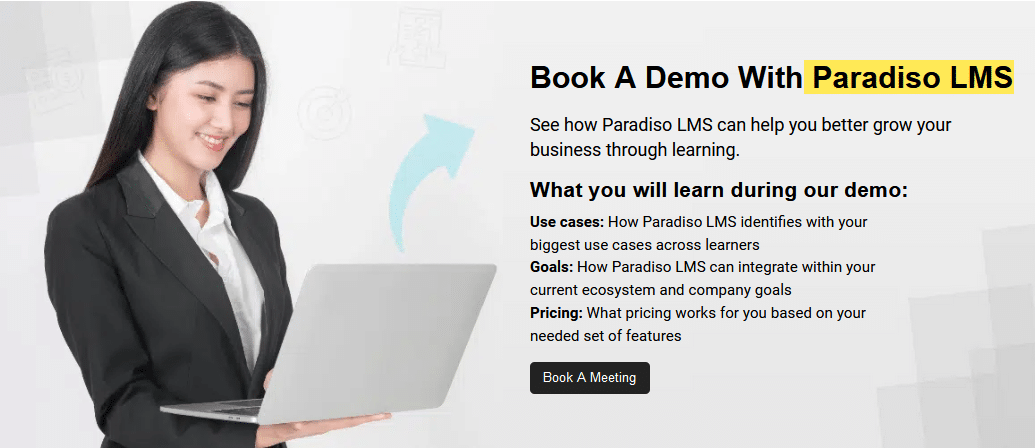Introduction to the 70:20:10 Learning Model for Learning & Development
The 70:20:10 Learning Model has transformed how organizations approach employee growth and training. Originating from research by the Center for Creative Leadership, this framework highlights that effective learning involves a balanced mix of experiences. Specifically, it suggests that 70% of learning occurs through on-the-job activities, 20% through social interactions like mentoring and peer collaboration, and 10% via formal training programs.
This model is considered a game-changer in modern Learning & Development (L&D) because it aligns with how adults naturally acquire and apply new skills. By shifting focus from traditional classroom training to a more holistic, experience-based approach, organizations can foster deeper, sustainable learning outcomes.
Adopting the 70:20:10 framework enables companies to tailor strategies that emphasize real-world application and social learning. Benefits include higher employee engagement, faster skill development, and improved knowledge retention. This approach also encourages a learning culture where continuous growth is integrated into regular workflows, helping organizations stay agile and competitive in today’s fast-paced environment.
In sum, the 70:20:10 learning model offers a practical, evidence-based pathway for optimizing organizational learning strategies by leveraging experiential and social learning alongside formal education.
Understanding the Components of the 70:20:10 Learning Model
The 70:20:10 framework is widely recognized for effective talent and leadership development. Built on extensive research, it emphasizes that impactful learning results from combining different developmental experiences. The model identifies three core components: experiential learning (70%), social learning through coaching and mentoring (20%), and formal training (10%). Understanding how these elements work together can significantly boost organizational skill-building efforts.
Experiential Learning – The 70%
At the core of the model is experiential learning, which accounts for about 70% of development. This involves learning by doing—such as working on challenging projects, rotating roles, or leading initiatives. According to the Center for Creative Leadership, this type of learning fosters deep understanding, sharpens problem-solving skills, and enables individuals to apply knowledge practically. For example, managing a cross-functional team provides real-world leadership experience, accelerating competence.
Social Learning – The 20%
Complementing experience-based learning is social learning, making up roughly 20%. This involves interactions with peers, mentors, and coaches. Social learning emphasizes feedback, observation, and collaboration as essential for skill acquisition. Mentorships and coaching sessions effectively facilitate reflection and guidance. As noted by Harvard Business Review, peer-to-peer learning fosters a culture of continuous improvement and shared expertise, reinforcing individual growth within a collective environment.
Formal Training – The 10%
The remaining 10% pertains to structured programs like workshops, e-learning, seminars, and certifications. These provide foundational knowledge and technical skills. Formal training ensures learners acquire accurate, standardized information before applying it through experiential and social pathways. While it represents a smaller portion of development time, it plays a crucial role in establishing core competencies.
Synergy for Effective Skill Development
Integrating these components creates a comprehensive learning ecosystem. For example, an employee might attend a formal course on project management, then lead a project (experiential learning), while receiving coaching from a mentor (social learning). This synergy accelerates skill growth, deepens engagement, and supports sustainable development. Effective balance across these elements ensures adaptable, confident professionals ready to meet evolving business demands.
How to Implement the 70:20:10 Learning Model in Your Organization
Implementing the 70:20:10 model can significantly enhance your organization’s learning and development efforts by promoting a balanced, practical approach to employee growth. The following steps guide you through a seamless integration process, along with best practices for customization and ongoing improvement.
Step 1: Grasp the Core Principles
Before starting, ensure HR and leadership teams understand:
– 70% Experiential Learning: Learning by doing via on-the-job challenges.
– 20% Social Learning: Skills gained through coaching, mentoring, and collaboration.
– 10% Formal Learning: Structured courses and workshops.
Recognizing these proportions helps in designing a well-rounded L&D strategy that mirrors real-world skill acquisition.
Step 2: Assess Organizational Needs
Conduct a thorough needs analysis:
– Identify skill gaps aligned with strategic goals.
– Evaluate current learning behaviors and preferences.
– Determine which competencies are best developed through experiential versus formal methods.
Use surveys, interviews, and performance data to inform adjustments, ensuring the approach fits your organizational context.
Step 3: Tailor Learning Formats
Adapt learning experiences for different teams:
– Operational units benefit from hands-on projects and role rotations.
– Creative teams may thrive through collaborative workshops and peer learning.
– New hires can be accelerated via onboarding, shadowing, and mentoring.
Customization increases engagement and effectiveness, respecting varied roles and learning styles.
Step 4: Design a Blended Learning Approach
Combine all three elements:
– Assign stretch assignments and cross-training for experiential learning.
– Promote peer groups, communities of practice, and coaching to support social sharing.
– Offer targeted workshops and e-learning to build foundational knowledge.
Ensure learning activities complement each other, creating a cohesive development journey.
Step 5: Utilize Feedback and Data for Continuous Improvement
Implement systems to gather feedback:
– Use surveys, pulse checks, and performance metrics.
– Leverage learning analytics to monitor engagement and impact.
– Refine offerings based on insights, enhancing relevance and outcomes.
Data-driven adjustments ensure your program remains aligned with organizational needs.
Step 6: Foster a Culture of Continuous Learning
Create an environment that encourages ongoing development:
– Recognize informal learning efforts.
– Let leaders model continuous growth behaviors.
– Provide platforms for knowledge sharing and collaboration.
A supportive culture embeds learning into daily routines, sustaining long-term growth.
Best Practices for Success
- Start small with pilot groups to refine approach.
- Align activities directly with strategic business goals.
- Train managers to facilitate experiential and social learning.
- Leverage technology, like LMS platforms, to support and track progress.
Embarking on the 70:20:10 journey requires planning, personalization, and ongoing evaluation. Thoughtful implementation enables organizations to develop resilient, adaptable employees ready to tackle future challenges. Utilizing tools such as Paradiso LMS can streamline this process, offering seamless tracking, social features, and diverse content delivery.
🚀 Ready to See Paradiso LMS in Action?
Let’s show you how Paradiso LMS can work for you.
Measuring Success and Impact of the 70:20:10 Model
To optimize your talent development efforts, evaluating the effectiveness of the 70:20:10 learning model is vital. Effective measurement demonstrates value, guides improvements, and ensures initiatives translate into tangible results. This section outlines key metrics, assessment methods, challenges, and real-world examples to help you gauge success accurately.
Key Metrics for Evaluation
Focus on indicators such as:
- Performance improvements, like productivity gains or KPI achievement.
- Engagement in informal activities, including peer coaching and social learning.
- Application of new skills on the job, assessed through self and manager feedback.
- Retention rates and career advancement levels, reflecting effective development.
- Organization-wide outcomes—innovation, customer satisfaction, or revenue growth linked to learning.
Evaluation Tools and Methods
Employ diverse techniques:
- Surveys and questionnaires for participant feedback.
- 360-degree assessments for behavioral and skill development.
- Pre- and post-test evaluations to measure knowledge gains.
- LMS analytics for tracking activity levels and engagement.
- Interviews, focus groups, and case studies for qualitative insights.
Assessing Formal Learning
Formal training can be evaluated via:
- Assessment scores and certification completion rates.
- Trainer and participant feedback surveys.
- Observations of behavioral change in the workplace.
Assessing Informal and Experiential Learning
Given their spontaneous nature, measuring informal learning requires creative approaches:
- Social learning platform analytics—monitoring discussions and interactions.
- Manager observations of improved problem-solving or leadership.
- Employee self-reflection logs to document insights.
- Analyzing correlations between informal activities and key performance indicators like innovation or client satisfaction.
Overcoming Challenges
Challenges include attribution difficulties, time lags for observable results, and capturing informal learning qualitatively. Strategies involve controlled evaluations, long-term tracking, and blended assessment methods.
Case Studies of Success
Examples include:
– A global tech company saw a 25% rise in employee engagement and 15% increase in innovation after applying the 70:20:10 approach.
– A healthcare provider improved clinical skills and reduced errors by 10% through experiential learning with comprehensive impact assessment.
Overall, measuring the 70:20:10 impact requires combining quantitative data and qualitative insights. Leveraging analytics tools, like Paradiso LMS, can facilitate accurate tracking and reporting, leading to better-informed L&D strategies.
Leveraging Technology with Paradiso LMS for Effective 70:20:10 Learning
The success of the 70:20:10 learning model hinges on supporting diverse learning modalities through robust technology. Paradiso LMS provides a comprehensive platform aligned with the model’s principles, enabling engaging, collaborative, and experiential learning environments.
Facilitating Social Learning
Social learning—the 20% component—thrives on interaction. Paradiso LMS features discussion forums, real-time chat, and collaborative workspaces that foster peer engagement. These tools promote knowledge sharing and community building, with analytics to measure participation and effectiveness.
Supporting Experiential and Blended Learning
The 70% experiential component benefits from Paradiso LMS’s multimedia capabilities, such as videos, simulations, virtual labs, and case studies. These foster hands-on practice and application. Blended experiences, combining online and offline methods, are supported via virtual classrooms and event integrations for maximum flexibility.
Tracking Engagement and Progress
Monitoring learner activity is vital. Paradiso LMS offers dashboards that track course completion, time spent, social interactions, and participation rates. These insights help L&D teams identify gaps and tailor interventions, ensuring learning outcomes are met.
Enhancing Learning Through Features
Features like gamification, badges, and mobile accessibility increase motivation and facilitate ongoing engagement. The platform’s versatility allows building personalized learning journeys that harness technology to optimize experiential and social learning.
Integrating Paradiso LMS into your strategy enables organizations to operationalize the 70:20:10 model effectively, resulting in a more skilled, adaptable, and motivated workforce.
Conclusion and Next Steps: Embracing the 70:20:10 Learning Model for Future-Ready L&D
As organizations aim to cultivate agile and resilient teams, the 70:20:10 learning model provides a proven pathway for effective development. It champions a balanced approach—combining informal and social learning with on-the-job experiences and formal training—that aligns with adult learning principles and meets today’s diverse needs.
Key Takeaways:
– The 70:20:10 framework advocates for 70% experiential, social, and informal learning; 20% coaching and feedback; and 10% formal training.
– Implementing this model fosters continuous growth, knowledge sharing, and higher engagement.
– Success depends on cultivating a learning culture, leveraging technology, and embedding learning into daily routines.
Actionable Tips for L&D Professionals:
1. Assess Current Practices: Identify opportunities to replace or complement traditional training with informal learning strategies.
2. Leverage Technology: Use LMS platforms like Paradiso LMS to facilitate social learning, track informal activities, and deliver microlearning content seamlessly.
3. Create Supportive Environments: Promote coaching, peer exchanges, and recognition of informal learning efforts.
4. Embed Learning into Workflows: Integrate development opportunities naturally into daily tasks to boost continuous growth.
5. Monitor and Refine: Use analytics tools to evaluate engagement and effectiveness, adjusting strategies accordingly.
Building a learning culture prepares organizations to face future challenges effectively. Solutions like Paradiso LMS empower L&D teams to implement 70:20:10 strategies at scale, creating engaging, innovative, and impactful learning environments—empowering employees to thrive in an ever-changing landscape.

















